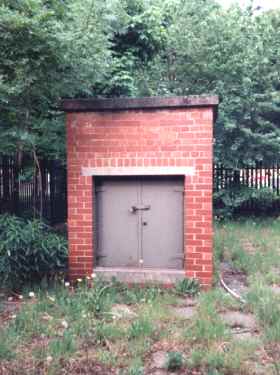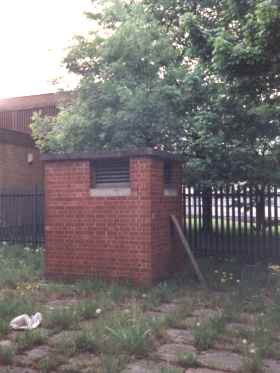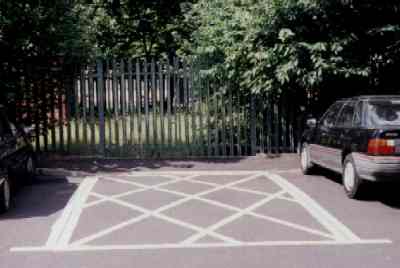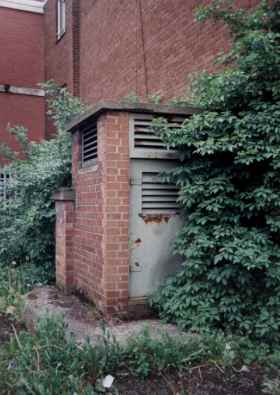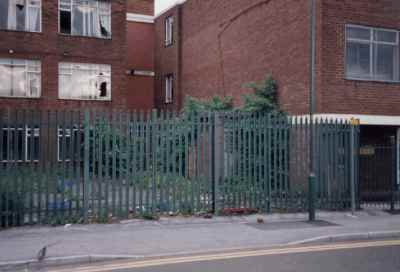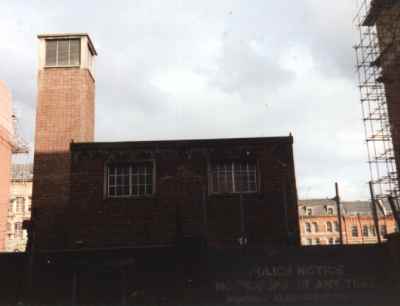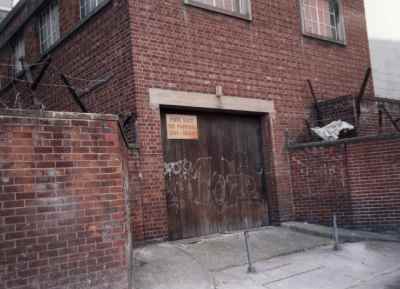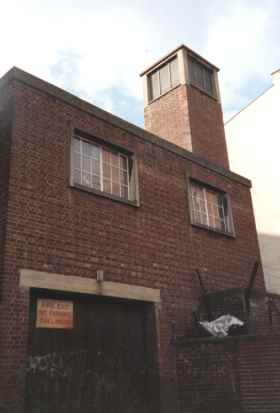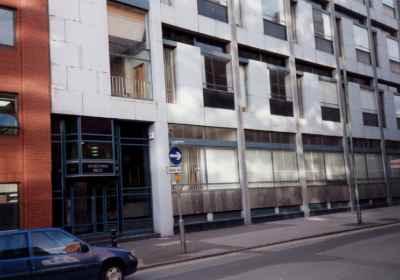Cold-War
History in Manchester
|
|||||
|
Ever since I moved to Manchester in 1986 I've heard rumours about
secret underground installations under the city centre. I particularly
remember being told on several occasions about a secret nuclear bunker
under Piccadilly Gardens. I have since found out that there is some
truth behind these rumours. This web site reports my findings.
Most of what I found out came from the excellent and highly recommended book: War Plan UK: The Secret Truth about Britain's "Civil
Defence" This book includes a map and description of the Guardian Underground Telephone Exchange and deep level tunnel system in Manchester. Duncan Campbell has kindly given me permission to reproduce this information here: I have had to remove the
map at the request of the Geographers' A-Z Map Co Ltd.
I decided to try to locate and photograph the shafts and surface buildings described in "War Plan UK". To my surprise I found the surface buildings still intact, although they seemed to be in a bad state of repair. Their existence is still not common knowledge in Manchester. I wonder how much is left of the underground installations. Ardwick ShaftThe entrance to the ardwick shaft can be found in a small fenced
off enclosure in Lockton Close in Ardwick. Lockton close is first
right off Grosvenor Street, which is off Downing Street. The entrance
is adjacent to the Mancunian way, and I wonder whether the deep level
tunnels where damaged by the extension of the Mancunian way which
was added a few years ago. Karel Hladky, a visitor
to this page made the following comment: "I don't think that
the foundations of the new Mancunian Way - London Road flyover piers
would go as deep as this - it is a steel bridge and would be a fair
bit lighter than a concrete one". Perhaps this is why the new
flyover was not a concrete construction, so as not to interfere with
the tunnels (also see the reply to this site
from BT).
Note the padlocked blast-proof doors and the ventilation louvers. These relatively new "No Parking" road markings in front of the entrance to the fenced enclosure may indicate it is still in occasional use (see the reply to this site from BT):
Salford ShaftThe entrance to the Salford shaft can be found in a small fenced
off enclosure on Islington Street between Chapel Street and North
Star Drive in Salford (close to Salford Crescent). As can be seen
the design of the entrance building and enclosure are very similar
to those found at the Ardwick Shaft despite being a couple of miles
from Ardwick.
City Centre Entrance and Ventilator Shaft BuildingThis is the city centre building containing the entrance lifts and ventilator shafts above the Guardian telephone exchange. This building is located on George Street between Princess Street and Dickinson Street. That is just behind the Odeon Cinema on Oxford Street. This is the entrance to the car park on George Street.
The sign on the gate reads: Looking over the wall I saw a BT van parked in the car park which makes some sense given the telecommunications function of the site, although I would not expect the exchange to still be in use. Perhaps BT are just using the car park for their vehicles (see the reply to this site from BT). This is the building viewed from James Street.
This would be the main loading bay into the building, possibly used for the installation of large telephone exchange equipment. The lift-shaft and thirty-five-ton concrete slab described in "War Plan UK" must lie just behind this door.
Note the tall chimney-like ventilation shaft required to provide a supply of fresh-air to the underground installations below. The sign on the door reads: Apart from the two "No Parking" signs the building is completely unmarked. A visitor to this site was inspired to take some more pictures of this structure in the city centre. Rutherford Telephone ExchangeThis is Rutherford House on George Street, just behind Piccadilly Plaza. This is the renamed and renovated Rutherford Telephone Exchange, and as such contains shafts allowing access to the underground Guardian Exchange.
Some of the ground-floor windows seem to have very strong grills or shutters behind them. Perhaps this building was strengthened to make it blast proof as some other surface telephone exchanges were in the mid 70s. I recently (Jan 2002) received an email which indicates that the information about Rutherford House containing an entrance to the bunker is incorrect: "Your reference to Rutherford House as being one of the entrances is wrong. The main entrance is behind the doorman’s office in a building across the Road, 26 York Street. The other entrance was in George Street. The building contained a passenger lift and a crane for winching materials to the tunnel below.
I worked in Guardian 1966-69 and it was a very depressing place of work. If the weather was bad during winter, I could go 5 days without seeing daylight. Dark in the morning going to work and dark going home. Most people who worked down there wore glasses. Eyestrain brought on by fluorescent lighting." Information from another site: Guardian was a Trunk Non-Director exchange, opened 8.0 a.m. 7th December 1958. A second and larger Trunk Unit, 'Pioneer' was brought into service during November & December 1959, to complete the Trunk Mechanisation in Manchester. Manchester Civic Society ArticleCertain members of the Manchester Civic Society had a guided tour of the Guardian Exchange in 1997. Their newspaper, the Forum, carried an article about this tour in its December 1997 edition. The Civic Society have kindly given me permission to reproduce this article here: Underground Manchester - An Undiscovered World Beneath Our Feet. Pictures Taken Within the Underground ExchangeI have obtained some pictures taken inside the underground telephone exchange. Unfortunately these are of a rather poor quality and I don't know when they were taken. I was particularly surprised to see the piano and pool table in the recreation room. They were planning to have quite a relaxing time sitting out armageddon down there! (but see the reply to this site from BT). THESE PICTURES ARE NOTHING TO DO WITH THE MANCHESTER CIVIC SOCIETY AND WERE NOT TAKEN DURING THEIR VISIT TO THE EXCHANGE. Pictures Taken During the Construction of the Underground ExchangeI have obtained some pictures taken during the construction of the underground telephone exchange. These pictures were kindly sent to me by BT in Manchester who also sent a reply to some of the points made on this site. I have recently (March 2002) obtained some more pictures taken during the very early phase of construction and some taken later but before the exchange equipment was installed. THESE PICTURES ARE NOTHING TO DO WITH THE MANCHESTER CIVIC SOCIETY AND WERE NOT TAKEN DURING THEIR VISIT TO THE EXCHANGE. Final CommentsAs the Guardian underground telephone exchange and deep level tunnels still exist under the streets of Manchester and are no longer in use, I believe they should be opened to the public as a cold-war museum. It is essential, in my opinion, to preserve this recent history so that past mistakes are not repeated. Alternatively, the exchange could be converted into an interesting venue for a club or bar by some entrepreneur, as so many other derelict buildings in Manchester have been. See the reply to this site from BT. If anyone reading this has any more information on the underground installations in Manchester please email me at: atomic@cybertrn.demon.co.uk
Duncan Campbell's home page has information on his current research and investigations. Readers of this page may also be interested in the Protect and Survive web site, an archive of UK civil defence material which also includes a comprehensive list of cold-war related links.
|
